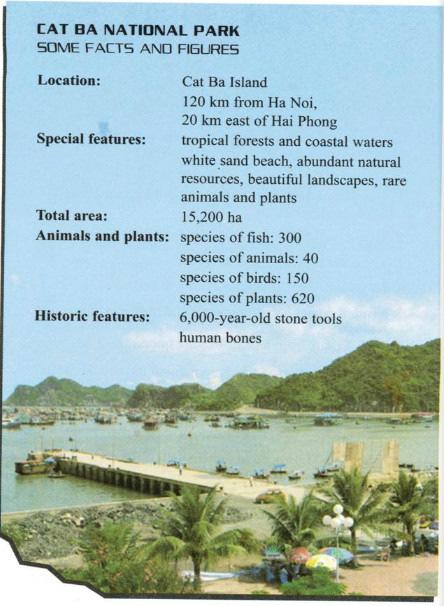
4 minute read
Make a conversation from the suggestions (p
from GIÁO ÁN TIẾNG ANH 11 HỆ 7 NĂM – HK2 (CHƯƠNG TRÌNH CŨ) THEO CÔNG VĂN 5512 (1 CỘT) NĂM HỌC 2021-2022
22. launch (v) [lɔ:nt∫]: phóng (tàu vũ trụ) 23. manned (a) ['mænd]: có người điều khiển DẠY KÈM QUY NHƠN OFFICIAL 24. mark a milestone (exp) ['mailstoun]: tạo bước ngoặc 25. satellite (n) ['sætəlait]: vệ tinh 26. achievement (n) [ə't∫i:vmənt]: thành tựu 27. congress (n) ['kɔηgres]: quốc hội (Mỹ) 28. mission (n) ['mi∫n]: sứ mệnh, nhiệm vụ 29. NASA (n) (National Aeronautics and Space Administration) ['næsə][,eərə'nɔ:tiks][əd,minis'trei∫n]: cơ quan hàng không và vũ trụ Hoa Kỳ 30. appoint (v) [ə'pɔint]: bổ nhiệm c) Products (Sản phẩm)
Suggested answers Students understand the meaning and pronounce the words correctly d) Implementation (Tổ chức thực hiện)
Advertisement
1. Assign tasks; explain 2. Monitor; help; tutorial 3. Review; Commendation Reported results 4. Conclusion; emphasize knowledge to remember ACTIVITY 3: PRACTICE (Hoạt động 3: Luyện Tập) a) Objectives (Mục tiêu)
- Listening for specific information and comprehension questions b) Content (Nội dung)
While you listen Task 1. Listen and decide whether the following statements are true (T) or false (F). Task 2. Listen again and answer the questions. c) Products (Sản phẩm)
While you listen Task 1. Listen and decide whether the following statements are true (T) or false (F). 1 - F (1961) 2 - T 3 - F (Neil Armstrong) 4 - F (two and half hours) 5 - T Task 2. Listen again and answer the questions. 1. NASA's Apollo programme was developed to meet President Kennedy's challenge. 2. The Apollo 11 launched on July 16th 1969. 3. It was used for controlling tile oxygen, temperature and pressure inside the spacesuit. 4. The astronauts stayed on the surface of the moon for two and a half hours. 5. They performed a variety of experiments and collected soil and rock samples to return to Earth. 6. They returned to the Earth on July 24th, 1969. d) Implementation (Tổ chức thực hiện)
- Step 1- Transfer the tasks (Chuyển giao nhiệm vụ) State the requirements for each activity for the students. Make sure the students have a clear understanding of the task for each activity before performing the task. - Step 2- Perform tasks (Thực hiện nhiệm vụ): Students work individually, in pairs, or in groups in the process of performing tasks. Teachers do general observations and help if necessary. - Step 3- Report, discussion (Báo cáo, thảo luận ) Ask a few students or group representatives to present their answers. Other groups comment. Teacher general comments. - Step 4: Conclusion, judgment (Kết luận, nhận định):
Teacher presents specific learning products that the student must complete as required and clarify the problem to be resolved / explained; Learning DẠY KÈM QUY NHƠN OFFICIAL tasks must be performed next. ACTIVITY 4: APPLICATION (Hoạt động 4: vận dụng) a) Objectives (Mục tiêu)
Students apply the knowledge they have just learned into communicative and practical situations b) Content (Nội dung)
After you listen Discuss the following questions. 1. In your opinion, what is the reason for the human interest in Mars and other planets in the solar system? 2. If you were offered a chance of going to the moon and you could take three things with you, what would you choose and why? c) Products (Sản phẩm)
Suggested answers 1. I think human beings like an adventure. 2. I would take a camera to take a lot of photos, water to drink and a Vietnam flag as a reminder for a Vietnamese person's appearance. d) Implementation (Tổ chức thực hiện)
- Step 1- Transfer the tasks (Chuyển giao nhiệm vụ) State the requirements for each activity for the students. Make sure the students have a clear understanding of the task for each activity before performing the task. - Step 2- Perform tasks (Thực hiện nhiệm vụ): Students work individually, in pairs, or in groups in the process of performing tasks. Teachers do general observations and help if necessary. - Step 3- Report, discussion (Báo cáo, thảo luận ) Ask a few students or group representatives to present their answers. Other groups comment. Teacher general comments. - Step 4: Conclusion, judgment (Kết luận, nhận định): Teacher presents specific learning products that the student must complete as required and clarify the problem to be resolved / explained; Learning tasks must be performed next.
Period 93 DẠY KÈM QUY NHƠN OFFICIAL Unit 15: SPACE CONQUEST D. Writing I. OBJECTIVES 1. Knowledge: - General knowledge: Students learn about the content and structure of a biography of a person. - Language: The Simple Past Tense and Simple Present Tense - Writing a biography 2. Targted competences: - Increasing students’ communication, self-study skills, critical thinking, problem- solving and creativeness. 3. Qualifications : - Increasing students’ hard work, science awareness, self-study spirit, enthusiasm, challenge acceptation, self-respecting, self-reliant, self-control and overcoming difficulties. II. TEACHING AIDS 1. Equipments: computer, projector. 2. Learning materials: textbook, pictures, videos. III. TEACHING PROCESS 1. Class organization: Class Date of teaching Attendance 2. Checking: During the lesson 3. New lesson: ACTIVITY 1: INTRODUCTION (Hoạt động 1: Mở đầu) a) Objectives (Mục tiêu)
Introduce the topic of the lesson and to raise students' interest b) Content (Nội dung)
Show a short video clip /picture about Neil Armstrong and ask students some questions about him: - Who is he? - What does he do? - Is he Russian or American? - When did he walk on the moon? c) Products (Sản phẩm)
Suggested answers - He is Neil Armstrong - He is an astronaut - He is American - In 1969 d) Implementation (Tổ chức thực hiện)
Elicit students’ answers. Give feedback. Lead into new lesson.
ACTIVITY 2: KNOWLEDGE BUILDING





